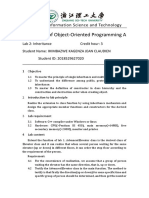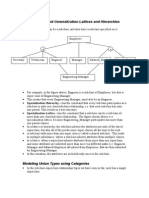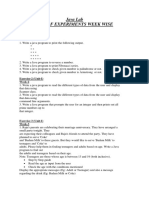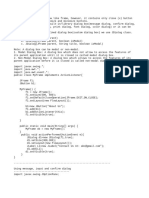0% found this document useful (0 votes)
467 views7 pagesInheritance
The document contains 5 Java programs that demonstrate inheritance and method overriding in Java. Each program creates a base class with methods and subclasses that override the methods. The programs show subclasses overriding methods to change or add functionality specific to the subclass.
Uploaded by
aditttoo24Copyright
© © All Rights Reserved
We take content rights seriously. If you suspect this is your content, claim it here.
Available Formats
Download as PDF, TXT or read online on Scribd
0% found this document useful (0 votes)
467 views7 pagesInheritance
The document contains 5 Java programs that demonstrate inheritance and method overriding in Java. Each program creates a base class with methods and subclasses that override the methods. The programs show subclasses overriding methods to change or add functionality specific to the subclass.
Uploaded by
aditttoo24Copyright
© © All Rights Reserved
We take content rights seriously. If you suspect this is your content, claim it here.
Available Formats
Download as PDF, TXT or read online on Scribd
/ 7

























































































